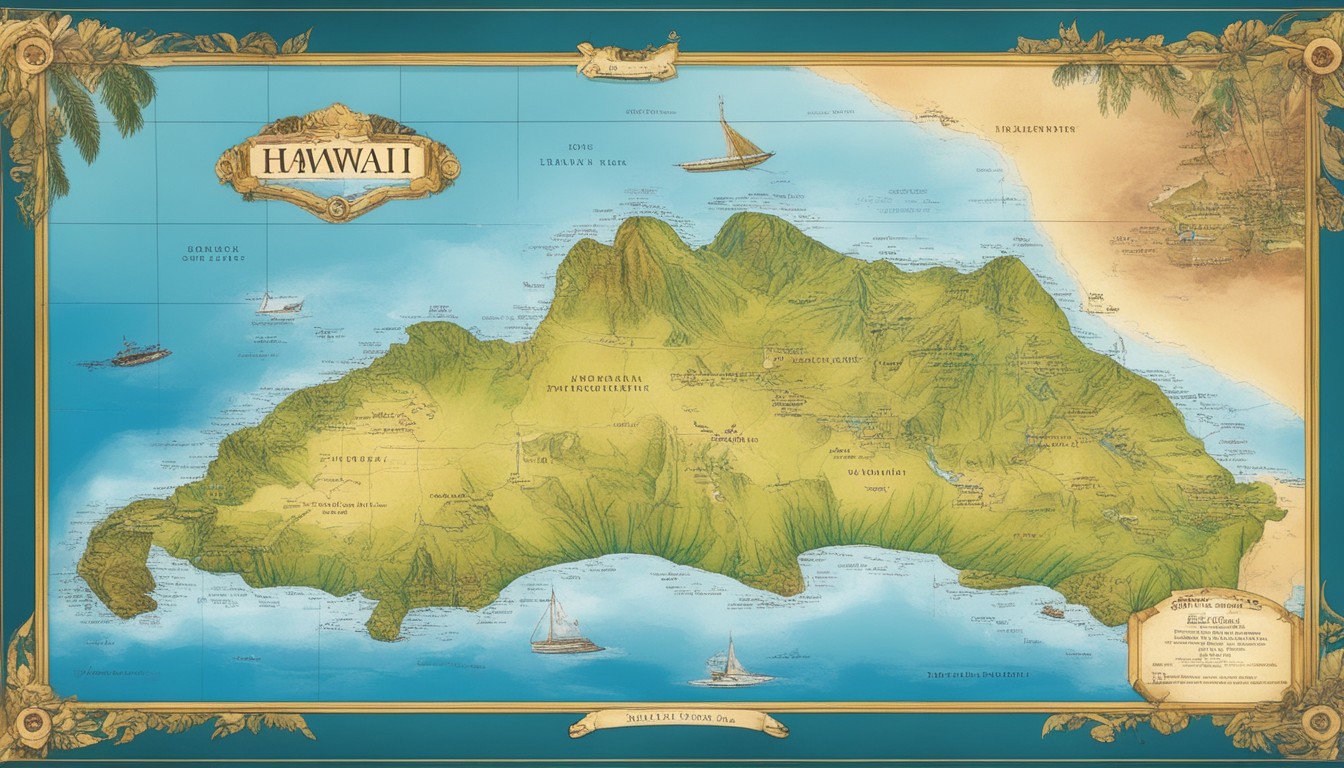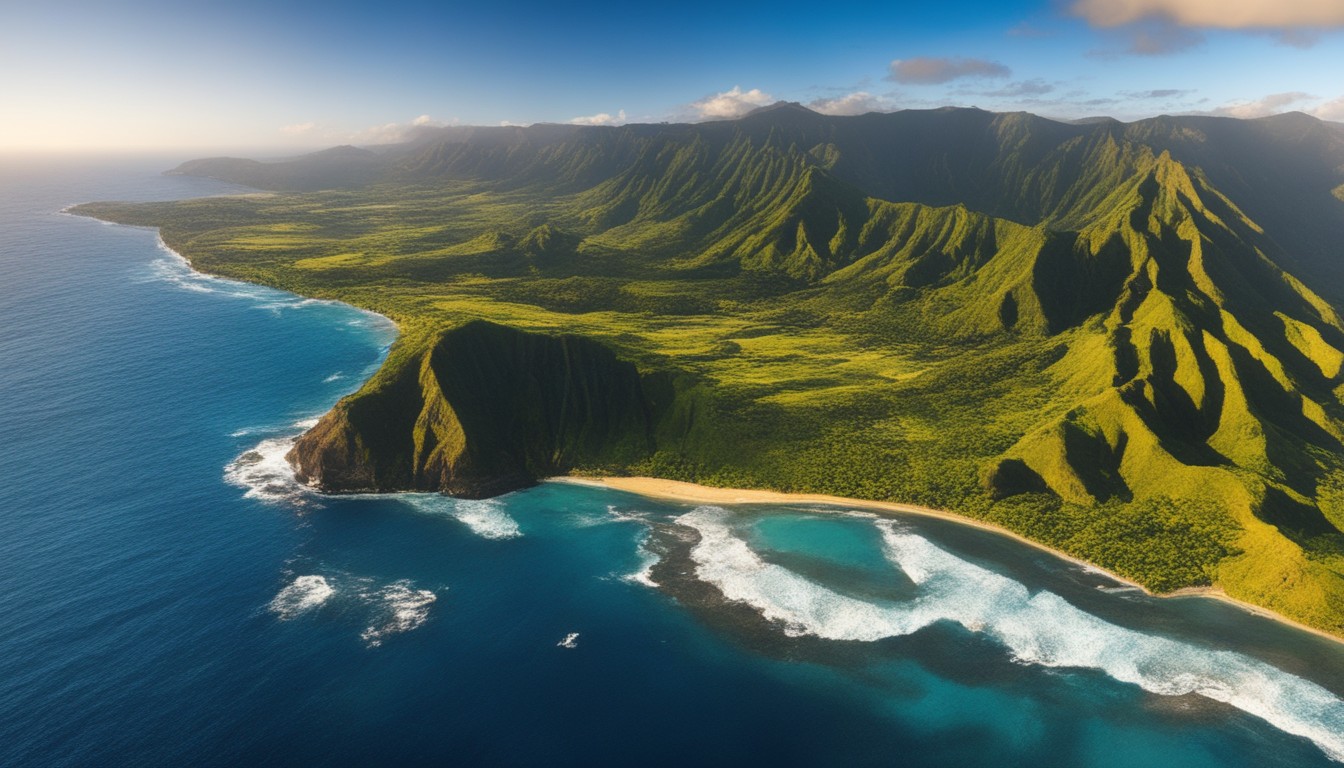You won’t believe how often I hear people ask: What continent is Hawaii in?
While it may seem straightforward that Hawaii is part of North America since it’s a U.S. state, its remote location in the Pacific Ocean actually places it closer to Oceania.
Plus, the way each Hawaii island was formed from volcanic eruptions makes it harder to lump the archipelago with any other continent.
This article will uncover common misconceptions about Hawaii’s location and explain the roots of the confusion. I will also share key facts so you can wow your friends with your Hawaii-related knowledge!
3 Common Misconceptions About Hawaii State

Before we dig into the details, let’s first clear out some misconceptions:
- Hawaii is part of the United States mainland.
- Hawaii is its own continental island.
- Hawaii is similar to other Pacific islands that are independent countries.
Why the Confusion Exists
I get it, though. It’s easy to get confused.
Here’s why:
- Hawaii became the 50th state relatively recently.
- Hawaii has a very distinct culture from the mainland United States.
- Hawaii’s location is isolated in the vast Pacific Ocean.
Hawaii’s Location: North America or Part of Oceania?
Situated in the Pacific Ocean, the hot tourist travel destination is located around 2,400 miles from the U.S. west coast. It would take about 5 hours to fly non-stop from San Francisco to Honolulu!
But Hawaii isn’t the only state with a confusing location. According to the U.S. Board on Geographic Names, Alaska is also a non-contiguous state.
Yet, the Aloha State’s situation is more complicated since Alaska is actually connected to the North American continent. Hawaii, on the other hand, sits in splendid isolation in the middle of the Pacific.

You might think Hawaii is near Australia or Asia since it’s in the Pacific region. But in reality, it’s around 4,000 miles from Tokyo and over 4,500 miles from Australia.
So, the Hawaiian archipelago is nowhere close to the major land masses. However, we can explore two strong contenders: North America and Oceania.
Insights into Hawaiian History and Political Ties to North America
Politically, Hawaii is tied to North America as part of the United States and has been so for years.
American missionaries and businessmen flocked to the islands back in the early 19th century. Then, there was the “Bayonet Constitution” and the use of Pearl Harbor as a U.S. Navy base.
However, Hawaii wasn’t officially the 50th state until 1959. Note that the 25-member Hawaii Senate got its first senators the same year.
Today, Hawaii’s official name is included in the U.S. Geological Survey Geographic Names Information System (GNIS).
Even with all that ancient history in mind, it wouldn’t be reasonable to say that Hawaii is on the American continent or its continental shelf—not when it’s technically closer to the Oceania geographic regions!
Overview of Hawaii’s Position in the Oceania Region
Oceania is a pretty diverse region in the South Pacific, and it encompasses New Zealand along with thousands of islands.
You can chop the region into three or four main sections: Micronesia, Melanesia, and Polynesia.
Within Oceania, Hawaii falls under the subregion of Polynesia. The native Hawaiian people and Polynesians share similar cultures and languages originating from their common ancestry as well!
In fact, even a glimpse into the Austronesian language family is a dead giveaway that the Hawaii state is culturally close to Oceania’s Polynesian islands. For reference, Hawaiian is considered a Polynesian language.
Hawaii’s Formation From Volcanic Activity: Is Hawaii Even a Continent?
When I first learned how the Hawaiian Islands formed, I was fascinated. The islands weren’t always there. Instead, they emerged from the Pacific Ocean thanks to underwater volcanic activity and constant tectonic movement.
Essentially, Hawaii didn’t form as part of any continental plate, and it didn’t break off an existing landmass.
The islands started taking shape millions of years ago when a hot spot deep in the oceanic crust sent massive amounts of magma upwards. This magma cooled down, creating new, solid land.

As the Pacific tectonic plate moved over this fixed hotspot, bits and pieces of ancient Hawaii formed, eventually rising above sea level as Hawaii’s major islands. That explains the island chain shape—it’s literally a trail!
Currently, the hot spot that created Hawaii sits underneath the Big Hawaiian Island. So, while the volcanoes on the oldest islands are dormant, the largest island keeps expanding from active volcanic eruptions.
Plus, scientists predict that the new islands will grow as the Pacific plate creeps northwest a few inches annually.
The gist of it is that islands have no geographic ties to the continental crust of North America, South America, or Asia. Hawaii stands alone geologically.
Stats and Fun Facts About Hawaii as the 50th State
So, Hawaii’s culture is close to that of the Polynesian islands. However, I still wanted to pull some stats from the U.S. Census Bureau and a few other sources to see how the state compares to other regions in the United States.
- Land Area: Hawaii’s combined islands cover about 6,400 square miles, which is somewhere between Connecticut and New Jersey.
- Foreign-born residents: 18.2% of Hawaii’s population is foreign-born, compared to around 13.7% in the United States (2018).
- Household Income: Hawaii’s median household income is $88,000, 24% more than the national average.
- High Cost of Living: Honolulu has the 2nd highest cost of living right after New York.
- Annual Rainfall: Mount Waialeale in Kauai is one of the wettest spots in the whole world, not just the United States!
One final fun fact that ties Hawaii to the United States? Well, Oahu is the birthplace of the 44th president, Barack Obama!
Final Thoughts
Figuring out what continent Hawaii is in can be tricky.
The answer can change based on whether you look at it from a political, geographical, or geological perspective.
That said, I lean more toward the assumption that each Hawaiian island is considered part of the Oceania region. The formation of the volcanic islands is also an interesting angle.
Either way, the debate itself sheds light on Hawaii’s distinctive history and culture. I hope you had fun learning more about the Aloha State!
